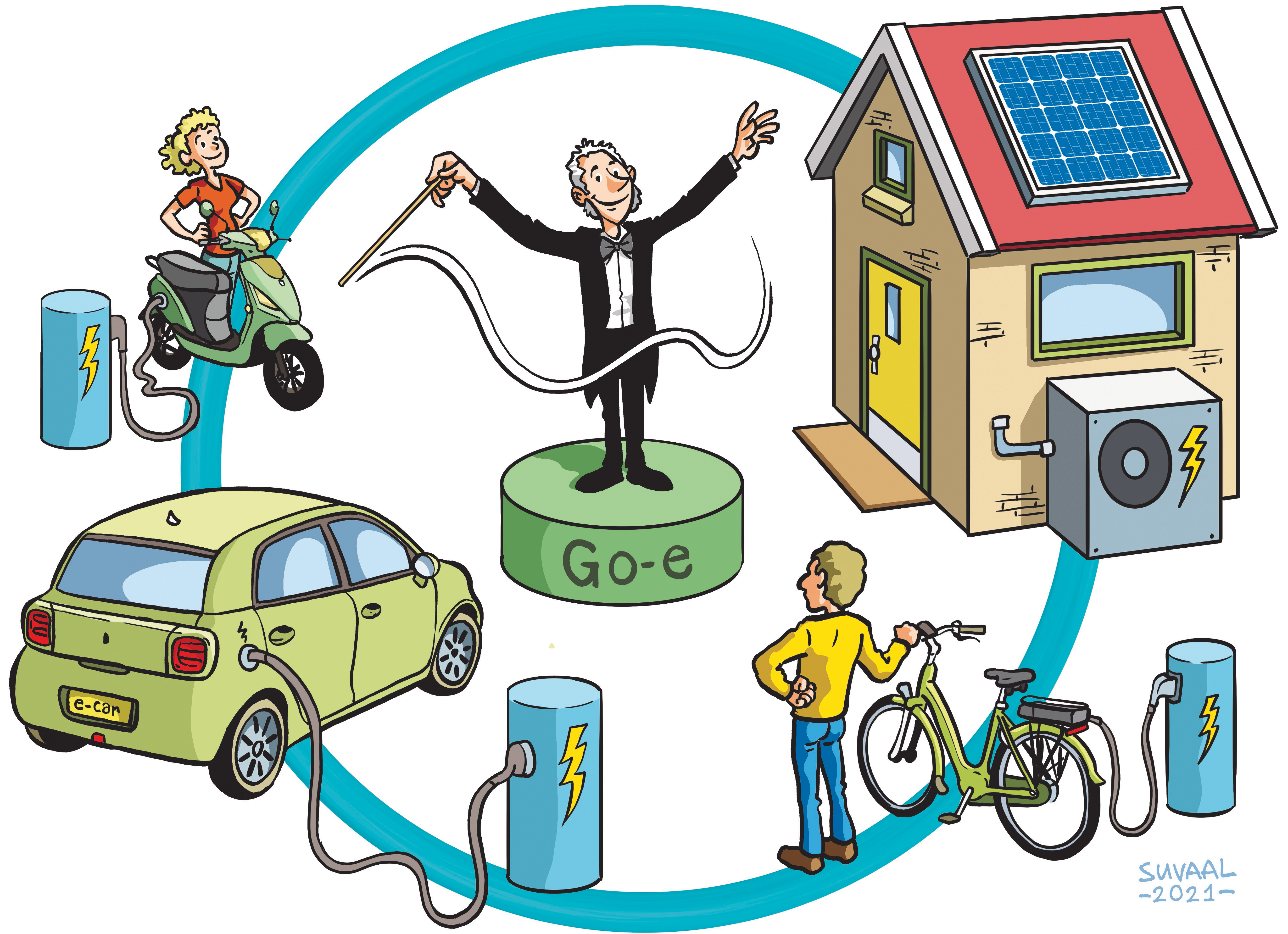Go-e
Research Themes: Energy, Software Technologies intelligent Systems


A TRL is a measure to indicate the matureness of a developing technology. When an innovative idea is discovered it is often not directly suitable for application. Usually such novel idea is subjected to further experimentation, testing and prototyping before it can be implemented. The image below shows how to read TRL’s to categorise the innovative ideas.
Summary of the project
The increased electrification of our urban and more generally the built environment creates challenges of congestion-occasions when there is more supply or demand of electricity than fits through a cable. This fluctuation in available electricity creates problems for the operation and eventually the stability of the grid: it prompts grid operators to conduct grid reinforcements at local levels, which is often costly, time-consuming, and inconvenient for residents. The researchers aim to investigate scalable electrical flexibility services for consumers, business, and distribution system operators in order to postpone or even prevent such low-impact works. This flexibility can be created by regulating the generation or use of electricity over time at household level. This can be done by, for instance, shifting the charging time for electric cars or the utilisation of heat pumps to moments when people use less energy or by storing the surplus of energy in batteries when the sun shines bright. Through the development of special algorithms the researchers develop a mechanism which can decide when energy flows which way. For the development of such mechanisms they also include the willingness of companies and consumers to be flexible in their energy flow. How can they interact with such a decision system, do they need to accept cookies or are there other ways for it to work?
By making the use of electricity more flexible and smart the researchers intend to design an alternative for bluntly increasing the capacity of local grids.
What's next?
When it is possible to make the grid more flexible the next step is to develop applications that will automate the use and trade of electrical energy in a transparent and fair manner.
Contribution to the Energy transition?
The fast electrification of our environment and the connected energy demand in the built environment necessitates electrical grid expansions. Grid congestion management is a key operational tool to smoothen the planning of such expansions and optimize the allocation of scarcely available technicians. This requires intelligent, scalable, and socially acceptable flexibility solutions borne by the complete energy supply chain.
dr. ir. Arjen van der Meer
prof. dr. Peter Palenksy
prof dr. Pavol Bauer
prof. dr. Zofia Lukszo
Caroline Fernandes Farias MSc
Jules Zweekhorst MSc
Faculties involved
- EEMCS
- TPM
